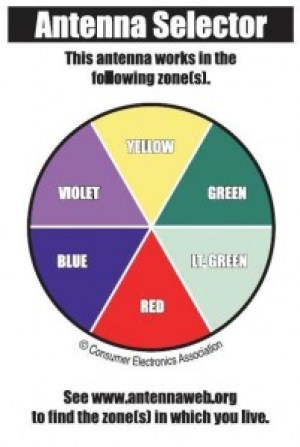
Sales of TV antennas on the rise, here’s how to buy one
More people cutting cable and pay TV, antenna sales are rising.
By Tamara Chuang | tchuang@denverpost.com | The Denver Post
PUBLISHED: November 27, 2016 at 12:01 am | UPDATED: January 31, 2017 at 12:05 pm
About 10 times a month, Anthony Leyba climbs up on top of a stranger’s roof or attic to install a TV antenna. That’s about twice as often as he did three years ago, when business picked up again after the U.S. transitioned to digital TV in 2009. Back then, customers bought antennas just to keep getting local TV channels for free. These days, customers call him because they’re cutting cable or satellite TV in favor of internet video, like Netflix or Sling TV.
“That’s one of the reasons why I started my company,” said Leyba, owner of Digital Concepts in Denver. “I saw it coming. I was formerly installing cable for Comcast and was seeing a lot of people ordering internet only.”
While the newer video services are cheaper, most don’t offer all of the local channels, which are still free if you have a decent TV antenna. And that’s why TV antenna sales and installation is growing years after people ditched cathode-ray-tube TVs.
Deciding to add an antenna is the easy part. Picking the right one and installing it is not.
“In some ways, not unlike cellphones, it depends on where the (TV) tower is. It can be shielded or hidden or if you’re just too far away, your signal will not be good,” said Brian Markwalter, senior vice president of research and standards for the Consumer Technology Association, which estimates TV antenna sales will grow 9.3 percent this year. “People just need to experiment.”

The Consumer Technology Association helped develop standards for outdoor antennas that give consumers an idea of how effective a TV antenna is. Yellows and greens are for homes with great reception. Reds, blues and violets mean you’re going to need a more powerful and probably expensive antenna. See more at AntennaWeb.org
CTA, which helped develop antenna technical standards, sponsors AntennaWeb.org to show people what over-the-air channels they can get at their address. Color codes indicate the antenna’s strength. Yellows and greens are for homes with great reception. Reds, blues and violets mean you’re going to need a more powerful — and probably expensive — antenna. But the colors are just for outdoor antennas. Indoor antennas get a check mark for certification, but research is DIY.
“There is a lot of education that needs to happen for some people who want to give Comcast a call and say goodbye,” said Renata Scorsone, vice president of marketing for Nuvyyo, which makes the Tablo digital video recorder that records live over-the-air HDTV shows.
“Even though we’re not selling antennas, we’re doing a lot of education. What kind of antenna do you need? Do you need an indoor or outdoor? We have a bunch of tools on our site, like a signal locator,” Scorsone said. “Because at the end of the day, we can’t help you with reception, we can only help you record TV.”
After a steady decline at the beginning of the century, antenna sales picked up after the U.S. government ordered TV broadcasters to move to a digital signal. Sales this year are estimated to hit 7.6 million, or 63 percent higher than 2009, according to CTA. HomeAdvisor, the Golden company that connects contractors like Leyba to homeowners, reports that TV-antenna installation requests have grown 28 percent nationally this year from last year.
“Nine percent growth is pretty good if you look at everything in general,” Markwalter said. “It’s not double digits, like fitness trackers and other new technologies, but it’s steady. We have members working for a number of companies that are innovating in this area — old reliable names like RCA and Terk.”
“It can’t hurt to talk to a retailer to see what they know and are seeing,” he said. “You want local advice.”
At the Best Buy store in Aurora, general manager James Robinson offers a service that online stores like Amazon just can’t. He recommends different antennas for people depending on where they live.
“Denver is tricky because of the buildings downtown, the mountains and valleys,” said Robinson, whose store carries about 25 different antennas. “It does vary drastically because of all the weird factors.”
Aurora, for example, is so far east of Lookout Mountain that most residents need a better antenna with a powerful amplifier, he said. In Arvada, where he lives, he’s OK with most any antenna.
“In Arvada, I’m higher, and I’m almost directly looking at Lookout Mountain,” he said.
Talk to an employee in the home-theater department and ask for local advice, he advised. Best Buy also has a special TV-antenna guide online.
Leyba, the installer, said customers often call him not knowing what to get. He recommends the ClearStream 4 for the best signal.
“Usually, they just go off my expertise. Through trial and error, I’ve been through several different types of antennas. It just depends on the range from Lookout Mountain and how many TVs they want to set up,” he said, noting that Denver-area consumers can get up to 50 channels. “And usually it’s people who have indoor antennas that aren’t working well. Really, the outdoor ones are better for consistent reliability, dependability and the picture not pixelating.”
Category : Blog , Cord-Cutting , Industry News
